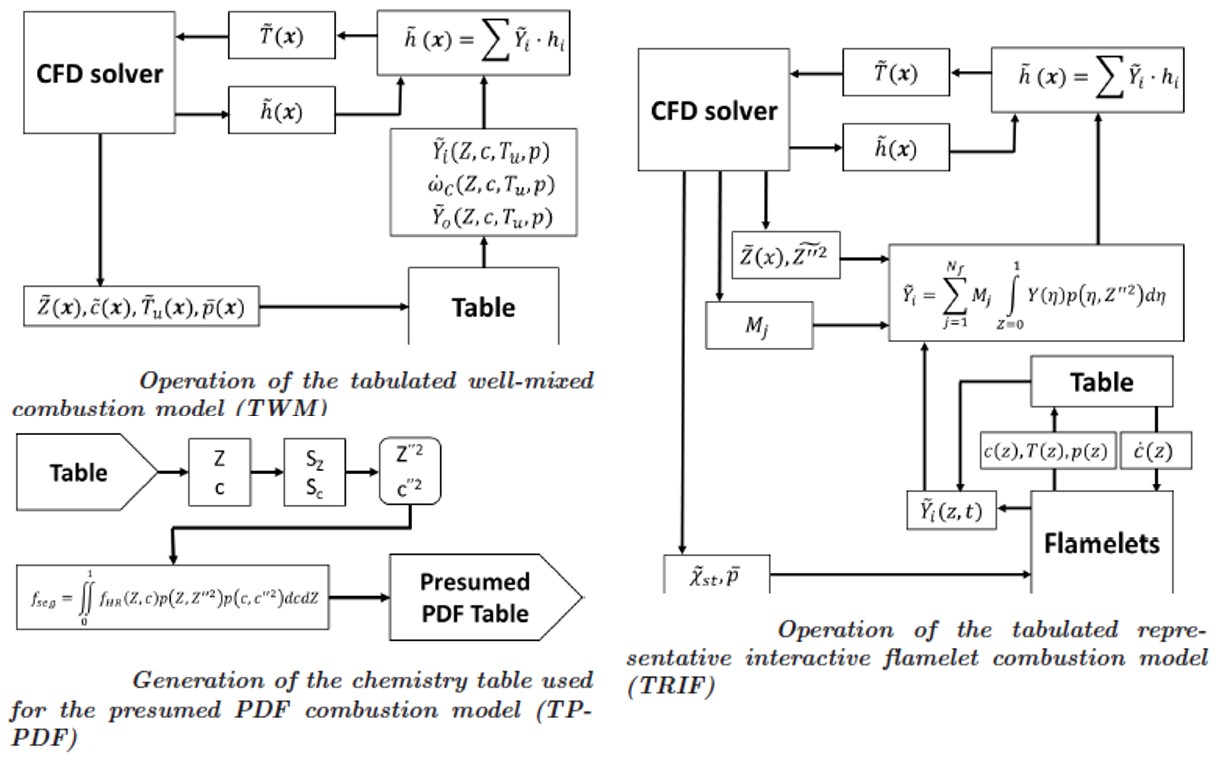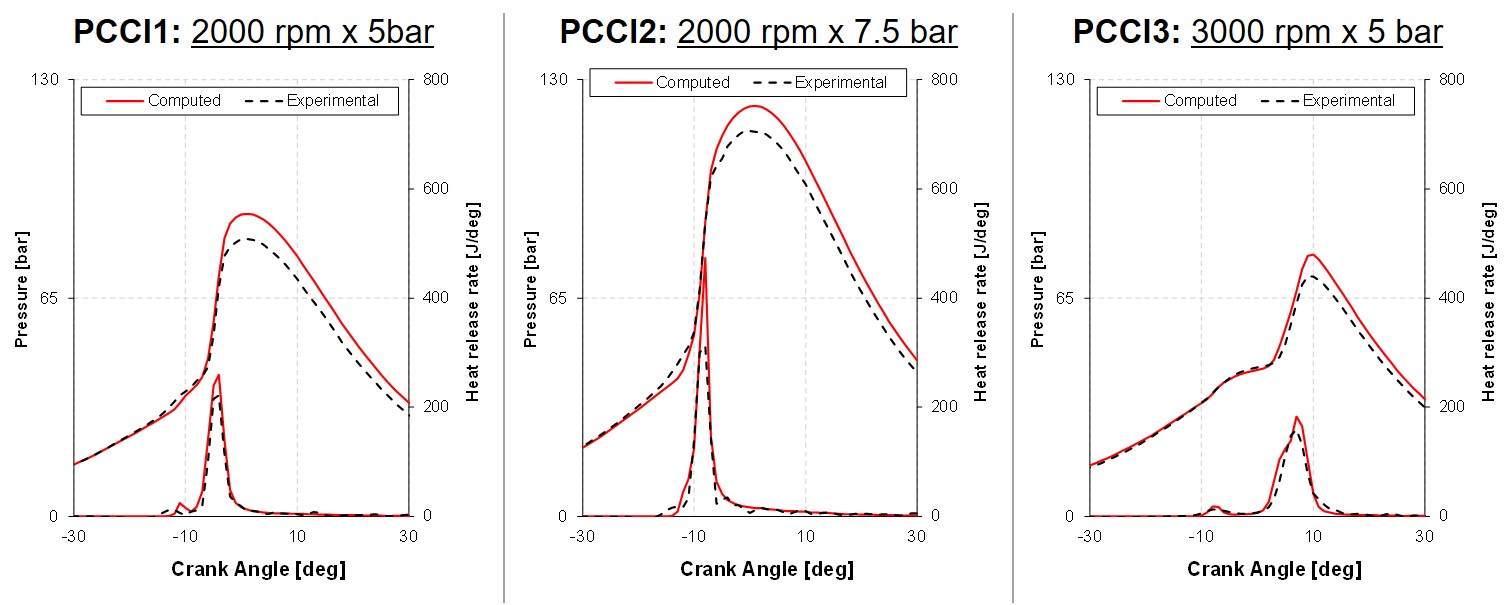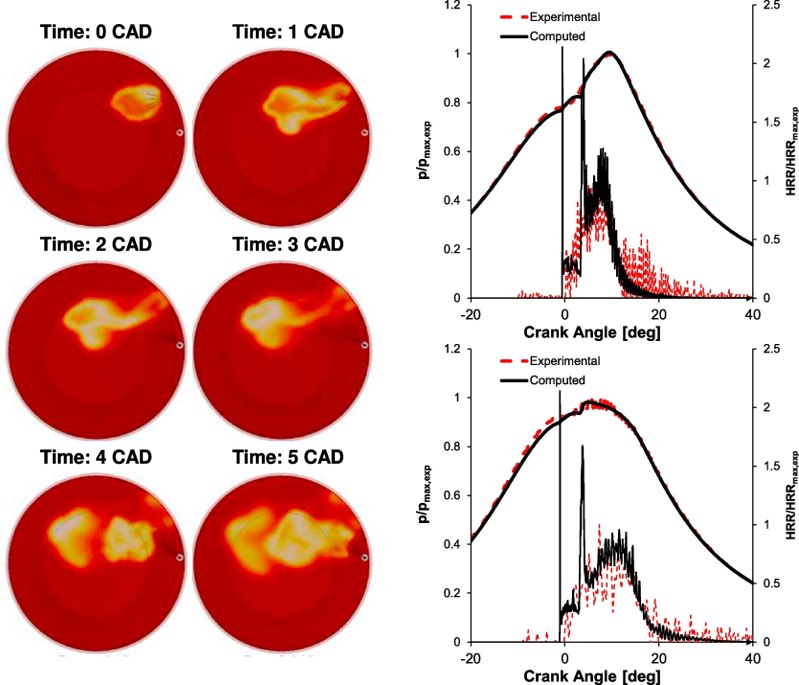Non-premixed turbulent combustion
Combustion control and optimization is of great importance to meet future emission standards in diesel engines:
increase in break mean effective pressure at high loads and extension of the operating range of advanced combustion modes seem to be the most promising solutions to reduce fuel consumption
and pollutant emissions at the same time. Within this context, detailed computational fluid dynamics tools are required to predict the different involved phenomena such as fuel–air mixing,
unsteady diffusion combustion and formation of noxious species. Detailed kinetics, consistent spray models and high quality grids are necessary to perform predictive simulations
which can be used either for design or diagnostic purposes.
Due to the charge motion structure (swirl) which is symmetrical with respect to the cylinder axis, simulation is limited to compression,
combustion and expansion phases. Simulation starts at IVC (intake valve closure) time and is performed in a sector of the combustion chamber which competes to a single nozzle.
Swirl number is used to initialize the in-cylinder flow field (wheel flow velocity profile). Swirl number is taken from either experiments carried out at steady-state conditions
or from steady-state simulations of the flow in the ports. Automatic techniques are available to generate high quality mesh, manage piston motion with use of topological mesh changes and
post-process the simulation results.
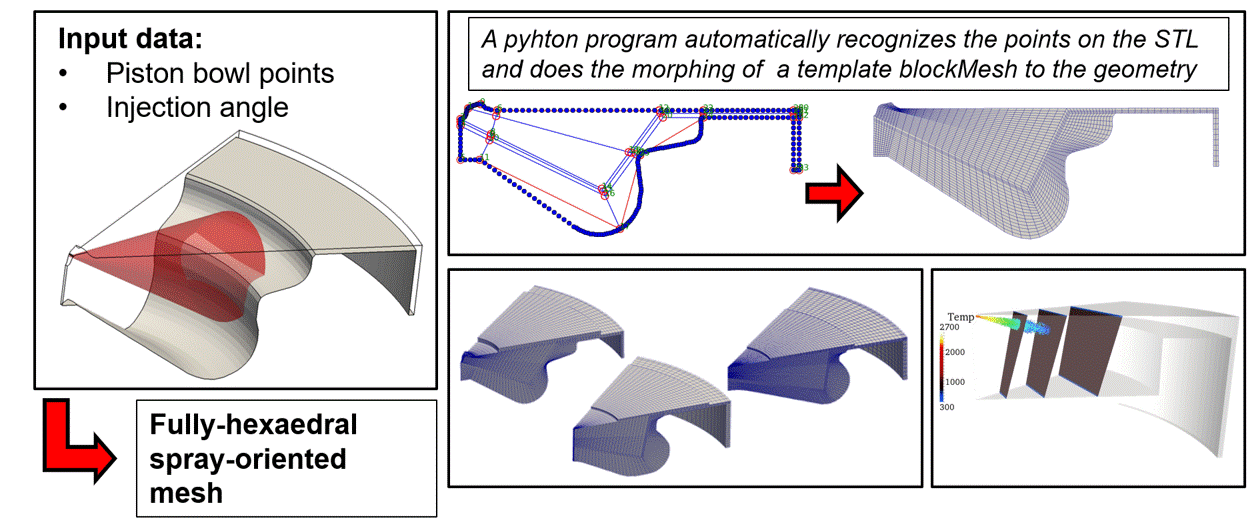
Representative interactive flamelet combustion model
This model is based on the laminar flamelet concept, assuming that the smallest turbulent time and length scales are much larger than the chemical ones and there exists a locally undisturbed sheet where reactions occur. This sheet can be treated as an ensemble of stretched counter-flow diffusion flames, called flamelets. The advantage of such treatment is that all reacting scalars only depend on the mixture fraction variable, Z, which is related to the local fuel-to-air ratio for non-premixed combustion. Hence, local chemical composition can be estimated from the Z field in the CFD domain, assuming that its sub-grid distribution can be represented by a beta-PDF. To this end, transport equations for both mixture fraction and its variance need to be solved. The Z transport equation includes a source term related to spray evaporation, while such effects are neglected in the mixture fraction variance equation since they do not significantly affect the computed results.
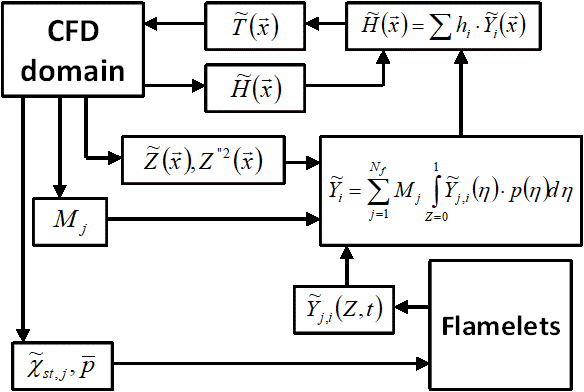
The RIF model has been extensively applied to several industrial cases of light and heavy duty Diesel engines, proving to be able to well describe the evolution of the combustion
process and the formation of the in-cylinder pollutant emissions.
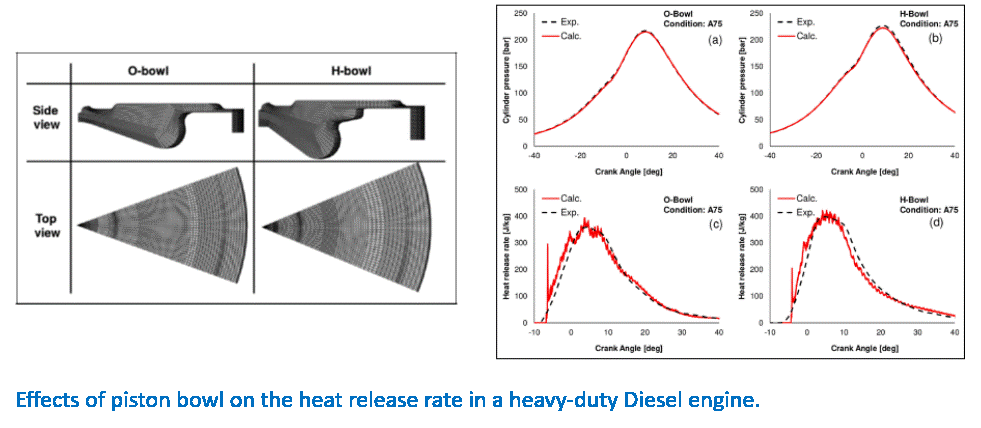
Different flame structures are considered: well-mixed, presumed PDF, representative interactive flamelets and flamelet progress variable. Such models are incorporated in a CFD solver where reaction rates and chemical composition are retrieved from a look-up table as function of state variables of the system (temperature, mixture fraction, pressure), a sub-grid mixing parameter (scalar dissipation rate) and the combustion progress variable. Several validations were carried out considering different engines, operating under conventional diesel, PCCI and dual-fuel combustion.
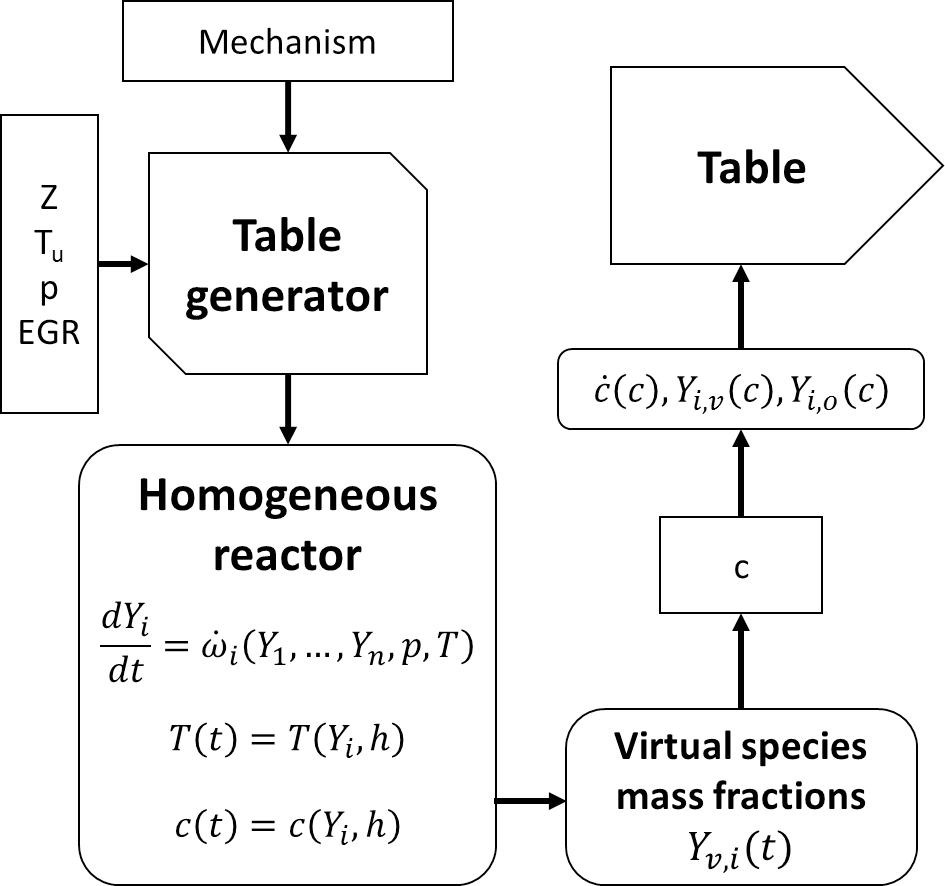
Tabulated chemistry approaches
When the Tabulated Well Mixed model (TWM) model is used, the homogeneous reactor table directly provide the progress variable source term to the CFD solver. In the CFD domain, transport equations for mixture fraction, enthalpy, unburned gas temperature and progress variable are solved and then the table is accessed with the local cell values. Interpolation of table values at the state of each cell is performed by an inverse distance-weighted technique. The tabulated presumed PDF model (TPPDF) model includes fluctuations for both mixture fraction (Z) and progress variable c. Integration of the presumed-pdf is performed offline by processing the homogeneous reactor lookup table according to user-specified values of segregation factors for Z and c. Finally, the Tabulated Representative Interactive Flamelet model (TRIF) is almost identical to the Representative Interactive Flamelet model, but it solves in the mixture fraction space flamelet equations only for energy and progress variable whose reaction rate is taken from the homogeneous reactor lookup table, also providing the chemical composition.
